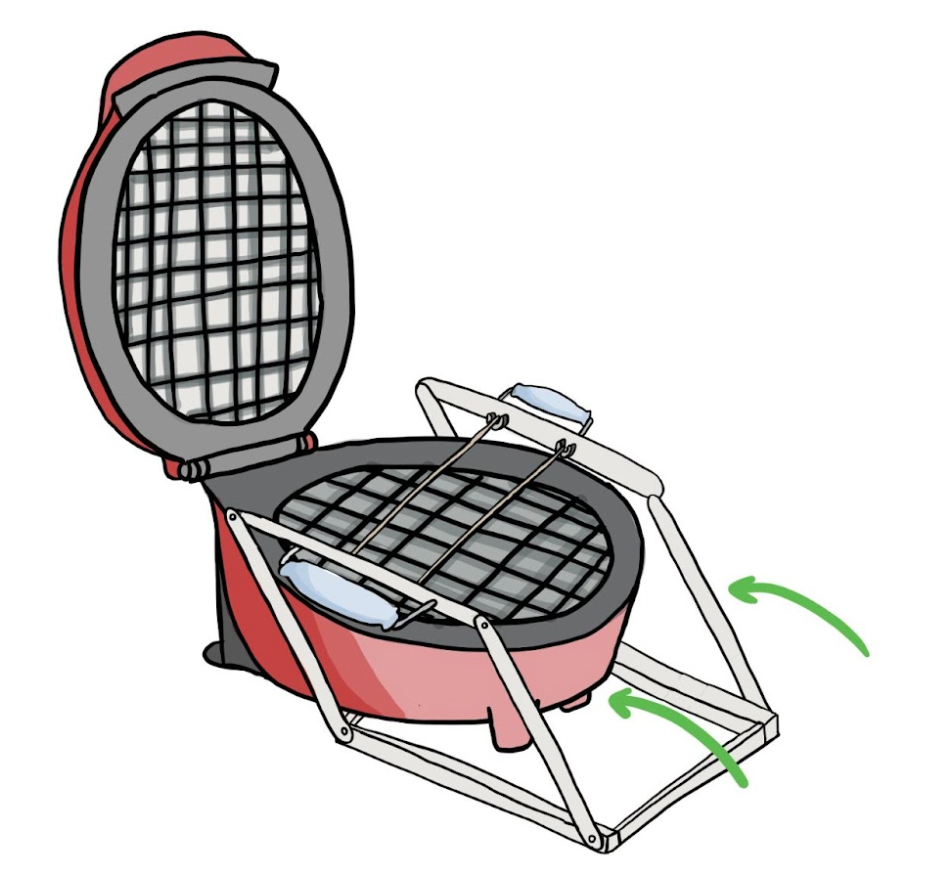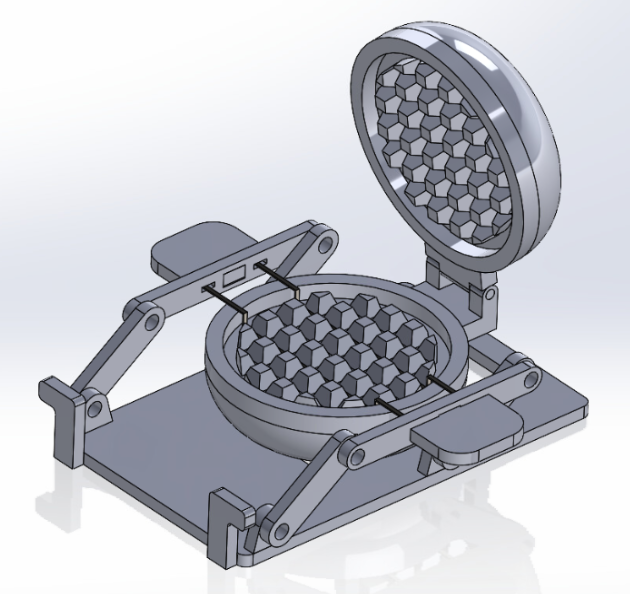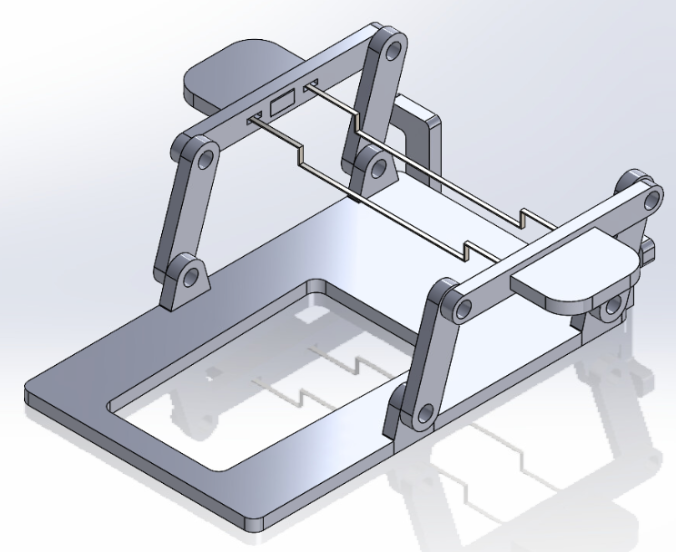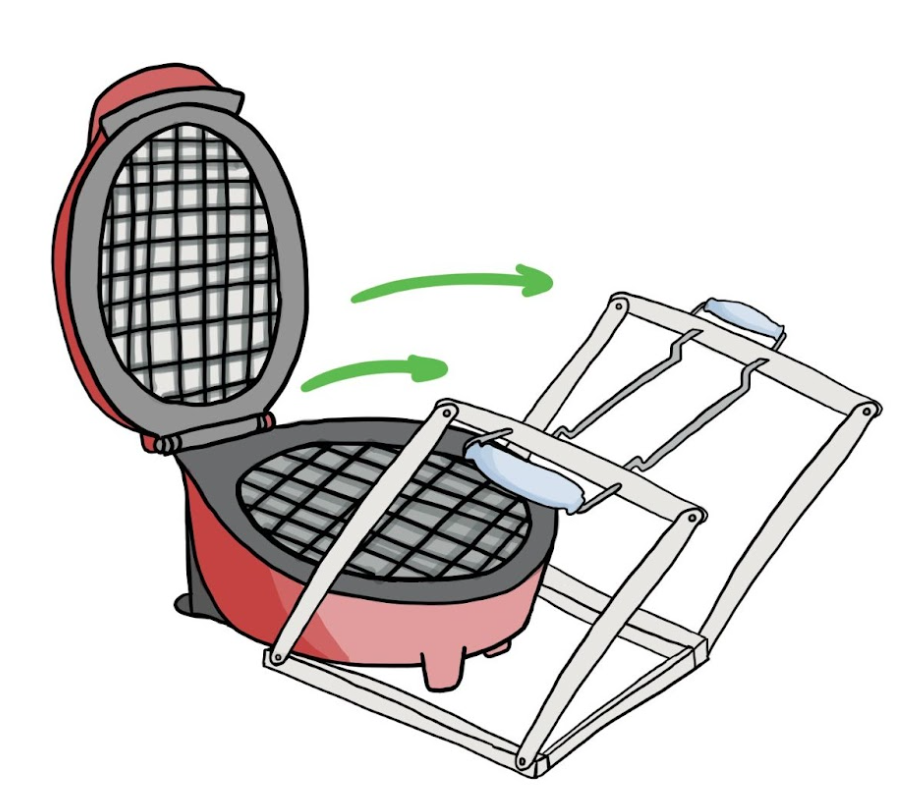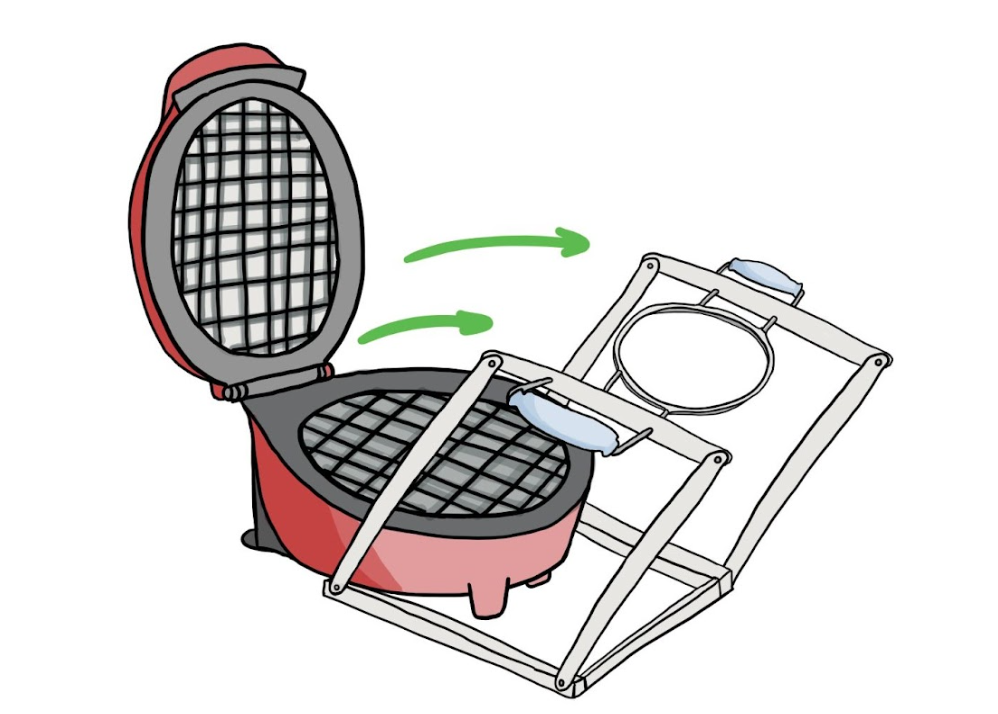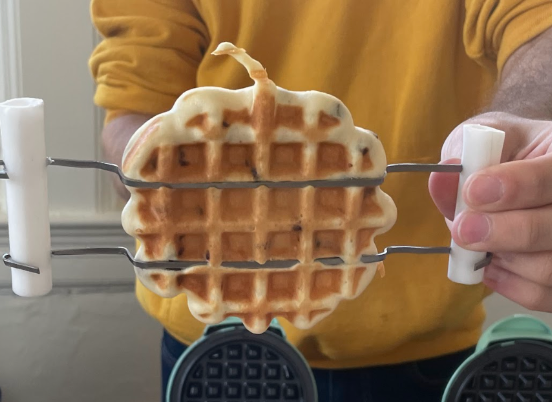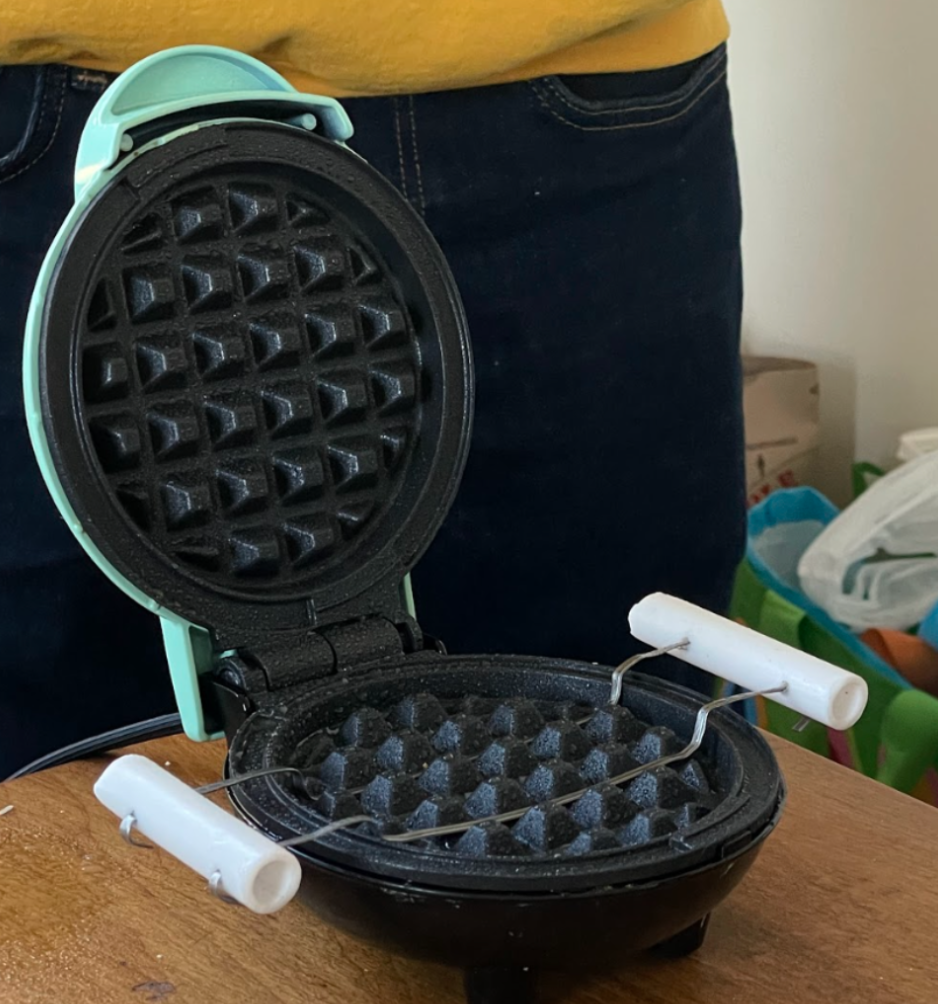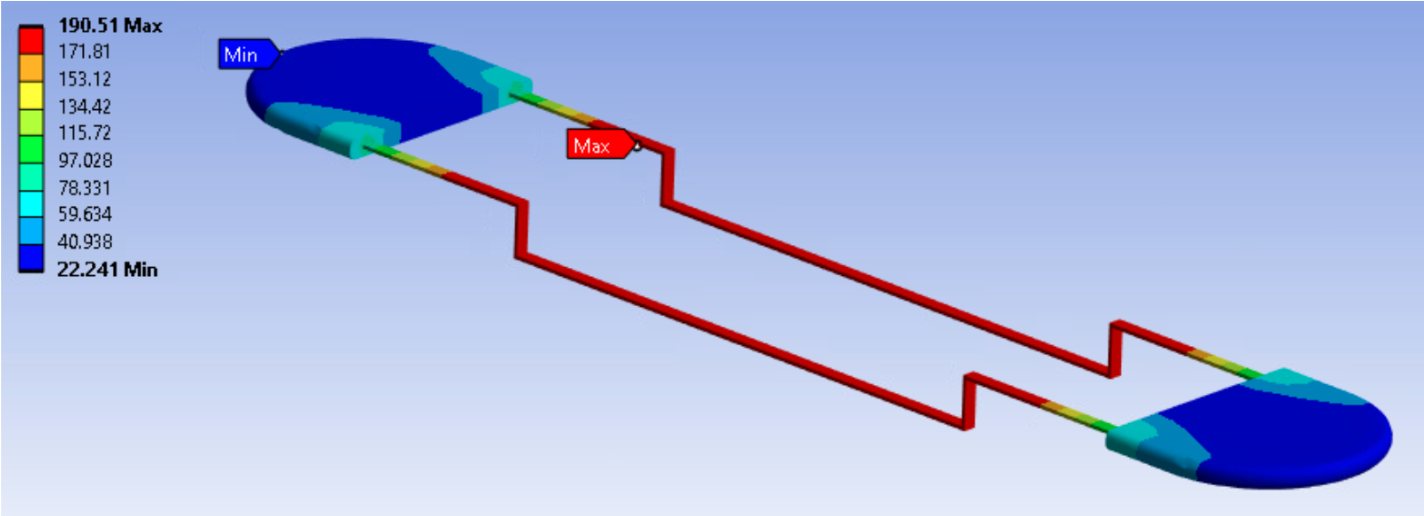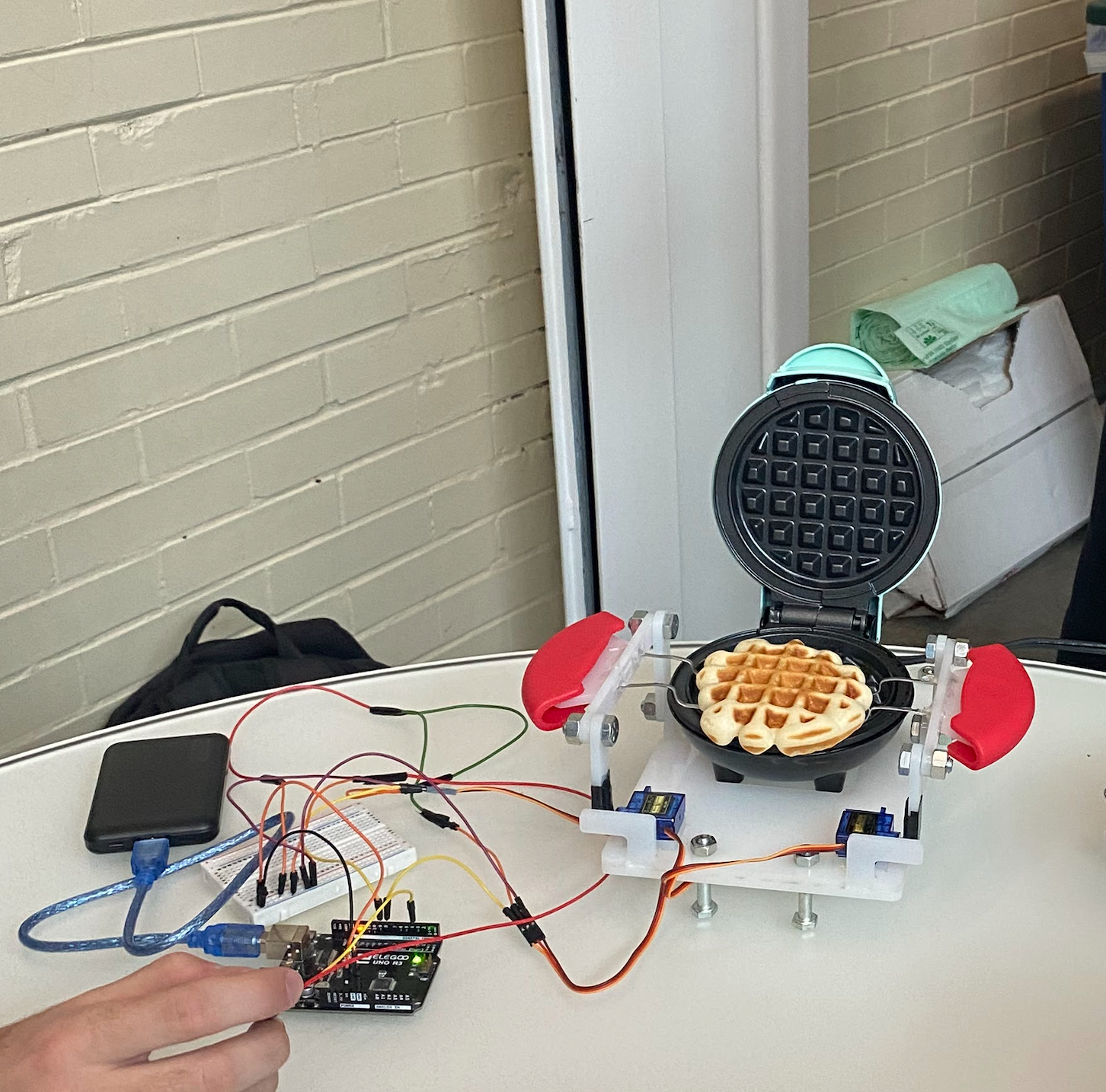WAFFLE UP!
For those who struggle with motor skills, most simple and cheap waffle makers are dangerous, which could cause both the person extracting the waffle and the waffle to get hurt! With Waffle Up, there’s no risk - getting a waffle out is safe and easy, and results in a near-perfect waffle every time!
SKILLS USED:
rapid prototyping, ANSYS Thermal FEA, SolidWorks
TIMELINE :
November-December 2022
COURSE:
24-370: Mechanical Design: Methods and Applications
BUDGET:
$100
TEAM MATES:
Lameck Beni, Nate Klein, and Iris Park
FINAL DESIGN
SolidWorks CAD Model:
IDEATION
A solution we conceptualized, shown in a FEW sketch below, was a base that allows the user to lift the waffle safely and a linkage system that brings the base and waffle out of the waffle maker. We initially ideated and prototyped two different bases - one using bamboo sticks and one made of sheet metal and insulated handles which go under the waffle. We tested both bases during our preliminary data collection.
PROJECT TAKEAWAYS
Conceptual sketches
This project was, to put it simply, so fun. It would’ve been great to have more time to automate it even more, with an added timer to force sensors, which could detect when batter was placed in the waffle maker, so then the timer could start, and no button would be needed to lift the waffle out. Although there are many things I can think of refining, looking back on this project as a current M.S. student, this project was a major stepping stone in growing my passion for mechanical and electromechanical design!
ENGINEERING ANALYSIS
Initial testing on Waffle Up! v1
Planned design for Waffle Up! v2
Based on our early ideation, we decided to continue with our sheet metal model, as initial testing proved successful. We learned that the bamboo stick model kept the waffle maker too open, which impacted waffle quality. The thin sheet metal, however, was able to keep the waffle maker closed enough for its waffles to have similar quality to the unmodified waffle maker.
After the test, we discussed our next steps to develop our product. Firstly, we plan to refine the sheet metal base by bending the sheet metal strips at accurate and precise angles, to lessen the gap created by inserting the linkage system into a closed waffle maker. This would result in a more evenly cooked waffle, making it easier for the user to remove the waffle from the base. Additionally, we want to conduct thermal analysis of the materials to ensure food safety and avoid burns and a structural analysis of the base and linkage to ensure that the waffle doesn’t tear. We also plan on switching the material from alloy steel to stainless steel to ensure the product is food safe. Another material that we plan on incorporating in silicone, as it’s food-safe as well and would be useful to add onto the handles, and overall making Waffle Up even more user-friendly.
A few more features that we’re planning to add to our prototype include a precise hole in the base of the linkage which aligns the waffle maker and the linkage system, as well as stopper components which will hold the linkage system in its upright position so that no extra effort is required to hold the waffle up. We also plan on laser cutting all of the linkage pieces as it’s cheaper than 3D printing them and gives us stiffer pieces to work with.
ANSYS Thermal Analysis
We manufactured our final modified product using laser cut acrylic components, and precisely cut and bent food-safe sheet metal. We included food-safe silicone handles as well as added a microservo motors, which at the press of a button, lifted the waffle maker up without any additional assitance. We presented our final prototype to our professor and TA and our demo ended with two well-cooked waffles for them both, which were retrieved from the waffle maker safely and easily!
The total cost of each subassembly unit is $1.72+$0.126+$0.0023=$1.85. With a cost of $13 per original product and factoring in labor and other costs, our estimated sales price of the modified product is $13+$1.85+$11.15=$26.00

